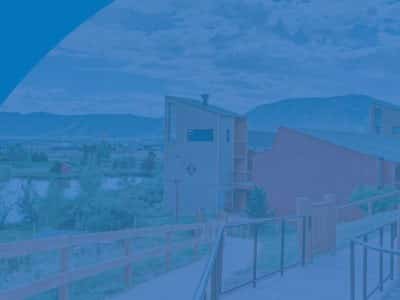When going to addiction rehab, knowing what to take with you, and what to leave behind can give you a big step in the direction of recovery. For example, taking t-shirts to treatment with graphics of drug or alcohol use isn’t allowed, so keeping them at home will reduce stress and frustration when you get to treatment and find you have nothing to wear.
Nonetheless, most rehab centers for drug addiction have firm guidelines for what you should – and should not – take with you for your stay. Many rehab centers organize outings for residents, so they can buy the things they need, such as personal care items, snacks, and books to name a few.
Rehabs Packing List
As long as you already know what you should bring inside a treatment facility, packing your belongings on your way will be easier than you think. You can also ask the facility if you are not sure of an item to bring. Nonetheless, it is important to pack light and bring only the essentials. While every rehab facility policy may vary, all of them will agree on the most important things you should bring inside. Among these essential items include:
- A directory containing all of the names and contact details of people who you want to be involved in your treatment (ex. family members, trusted friends, healthcare staff, 12-step sponsors, pastors/spiritual advisors, etc.).
- Personal jewelry that you consider a necessity, such as a wedding band or a sentimental watch.
- Alarm clock with no radio (optional, some treatment facilities have this as well).
- All of your prescribed medication including the dosage (given that it has a doctor’s prescription and contained in its original bottle with its label readable and undamaged. For liquid medications, it should still be unsealed and not used)
- Extra cash for store runs, etc.
- Checkbook/credit or debit card for treatment medications.
- A form of identification such as passport, driver’s license, etc. Insurance cards as well.
- Calling card for long-distance calls if required by the facility.
- A journal or notebook.
- Photos of your loved one you can keep in your room or wallet.
- Books related to self-help, recovery or spiritually-related (although some centers already provide reading materials for their patients).

Do You Have Specific Questions of what to Bring?
Talk to One of our Admission Experts
Important Items to Bring to Rehab
Entering rehab, you will be subjected to security checks so that no forbidden items will make their way inside the facility. On the other hand, some centers will list down all of the items you bring inside to ensure you won’t leave a single item behind once you check out. Meanwhile, there’s no need to worry if you have brought something along that is actually prohibited inside the facility. Most centers deal differently with such prohibited items.
For one, some facilities will have the items picked up by the person who accompanied you to the facility. On the other hand, some will hold them within the premises until someone is able to pick them up or keep the items until you check out from the facility. So, what items are generally allowed inside a rehab facility? It is important to bring some important documents, extra cash, decent clothing, and personal care products you can use inside. These items will be discussed in detail, later on, to know better what to pack for rehab.
Clothing You Should Pack for Rehab
It is also important to know that most rehab inpatient facilities follow a certain dress code. If you’re not sure what to wear in all types of weather, you can pack the “usual” such as plain T-shirts and sweaters. Make sure not to bring your entire wardrobe to the facility due to limited space inside your room.
Most facilities also have their own laundry area, so make sure your clothes are easy to wash and do not require dry cleaning, etc. Likewise, laundry days in most centers are mostly once a week, so there’s no reason to bring a lot of clothes when you check-in. Among allowable clothing items you can bring in accordance with most inpatient drug rehab rules include the following:
- Comfortable shoes you can wear every day
- Sports shoes you can wear during physical activities
- Flip flops for the shower
- Slippers
- Pants
- Shorts (as long as the length is compliant with the rehab rules)
- Shirts (Tank tops are acceptable, but you should wear them with a jacket or cardigan)
- Undergarments
- Socks
- Bathing suit (no two-piece/bikini for women, trunks or board shorts for the gentlemen)
- Bathrobe
- Sleepwear, such as a pair of pajamas
- Belt and hat (depending on the facility rules)
- Outfits for special occasions (ex. Family Night)
Personal Care Products
As for toiletries and personal care products, they are generally acceptable in most treatment centers. However, most of them require such products to be alcohol-free or products that do not contain alcohol as part of the ingredients. Among personal care products accepted in most centers include:
- Toothpaste and toothbrush
- Haircare (ex. shampoo, conditioner, pump hairspray only, comb or brush)
- Soap or shower gels/creams
- Deodorant
- Feminine hygiene products
- Shaving cream
- Body lotion and sunscreen
- Simple makeup (ex. lipstick, foundation, eyebrow pencil, etc)
While looking good inside the facility can be important, it is still best to ask your rehab center for some exceptions.
What NOT to Bring Inside Rehab
Now that we have already mentioned the must-have items inside a treatment facility, there are some items that are not allowed inside. This is to ensure overall safety and to provide a conducive environment for a successful recovery. Such prohibited items may vary among other facilities. Nonetheless, among most common restricted items inside a treatment facility include:
- All kinds of drugs and alcohol
- Weapons (ex. guns, any sharp objects, etc.)
- Pornographic materials
- Outside foods and drinks
- Products containing alcohol (ex. perfume, rubbing alcohol, mouthwash, aerosols, etc.)
- Prescribed and/or OTC medicines that are previously opened or used
- Suggestive clothing (ex. clothes with plunging necklines, crop tops, shirts with profanity or violence printed on it)
- Cleaning supplies that contain bleach or ammonia
- Gadgets, video games, playing cards, DVDs, and the like (most centers have sports facilities and equipment)
- Candles or incense
- Playing cards or games
- Sporting equipment
The above-mentioned items are strongly prohibited as these can greatly affect your focus on your recovery. Meanwhile, outside foods and drinks are banned in the facility. This is because most of these foods contain a questionable amount of sugar and caffeine. That is why the facility will provide healthier foods. You can also notify the treatment center if you have a certain diet.
Miscellaneous Items
On the other hand, some items may be allowed in certain facilities. These include:
- Your own pillows, comforters, and other items that can make your bedroom feel like home
- MP3 players and cameras (preferably not capable of Internet connection)
- Electric or disposable razors
- Chewing gum and vitamins (as long as it is new and unopened)
- Nail clippers
- Cigarettes
- Camera
- Vitamins (must be new and unopened)
Check with the center to see if they are laptop or cell phone-friendly; you also want to check what the regulations are for cellphone use. There might be restrictions on phone use in the drug and alcohol rehab center for confidentiality purposes (ex. posting your “rehab updates” in your social media accounts), as well as to avoid potentially dealing with outside people who may attempt to smuggle illegal substances inside the facility.
As mentioned earlier, having yourself or someone you love checked into rehab is one of the hardest, yet best decisions you can make. It can help you clear away from your old lifestyle and seek a better and cleaner life ahead.
Along with your firm decision to enter rehab is your willingness to follow the facility’s rules and regulations. You can always ask your chosen treatment facility about concerns and clarifications regarding what to bring to rehab and items to avoid bringing. If you find yourself asking more questions about addiction rehab when it comes to the cost of rehab, can you smoke cigarettes in rehab, can you bring your cellphone to rehab or some of the most frequently asked questions about rehab we’re here to help!
Medical disclaimer:
Sunshine Behavioral Health strives to help people who are facing substance abuse, addiction, mental health disorders, or a combination of these conditions. It does this by providing compassionate care and evidence-based content that addresses health, treatment, and recovery.
Licensed medical professionals review material we publish on our site. The material is not a substitute for qualified medical diagnoses, treatment, or advice. It should not be used to replace the suggestions of your personal physician or other health care professionals.







